Arriving at our Dali hotel, I’d seen a sign advertising a “traditional three course tea ceremony.” I love tea and have attended a few classes in Chinese-style tea ceremony, so I asked Huang to arrange a visit. He rolled his eyes and said he had never taken guests to one – he was surprised that I wanted to go. I explained my interest in tea and he duly scheduled a trip to a “folk residence” which serves the three courses of tea. Turns out the experience was well worth the eye-roll, as we soon found out.
The residence itself was a traditional family courtyard dwelling, beautifully restored and touched up with typical local details. (Since our trip I've seen it featured on CCTV as an example of local, tourist-focused entrepreneurship!)
 |
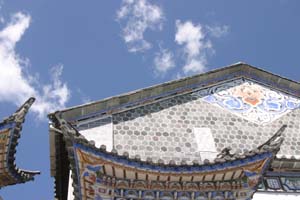 |
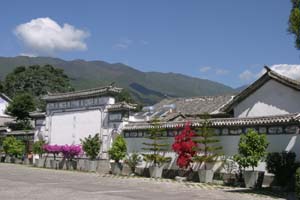 |
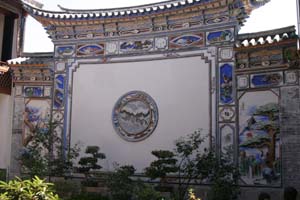 |
 |
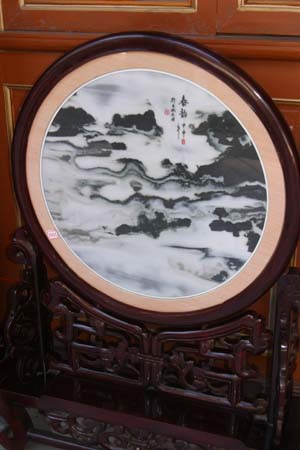 |
A s soon as we stepped inside the house itself, the sound of scratchy, over-amplified music with a suspiciously modern, synthetic backbeat alerted us as to why Huang had avoided the tea stop with previous visitors. It reeked of made-for-tourist tackiness – just the kind of thing that we – and other Wild China customers – try to avoid while traveling. (Huang, you were right! Don't let future guests talk you into this!) China’s stereotype of its 26 minority populations are that they are all happy people who adore dancing and singing all day long as they lead their quaintly primitive lives. Every Chinese book and documentary we’ve seen about minorities has headlined the singing-and-dancing aspect of their cultures. |
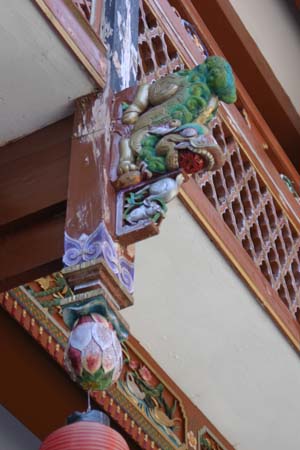 |
I strongly suspect that Dali’s three courses of tea “ceremony” was concocted strictly for tourist consumption. Perhaps at the core is a kernel of authenticity – the “three courses” are basically three cups of tea – the first sweetened to represent carefree childhood, the second bitter, to represent the cares of maturity and the last with an odd but neutral “aftertaste” that’s said to represent a reflective old age.
| But the tea is dressed up within a presentation of “typical” Bai singing and dancing, on a stage worthy of Disney’s Epcot. Cups of tea were slapped down in front of us throughout the performance. | 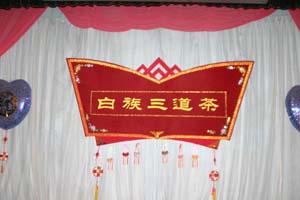 |
We took our seats and the scratchy, loud music started up. A troupe of young Bais took the stage to perform various dances, acting out supposedly traditional rituals for farming, courting, etc. The dancers’ bored looks made us uncomfortable.
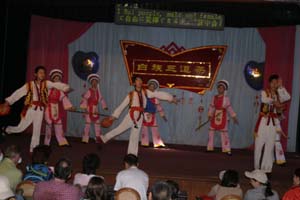 |
 |
| I snapped a couple dozen photos before I caught one dancer actually smiling! | 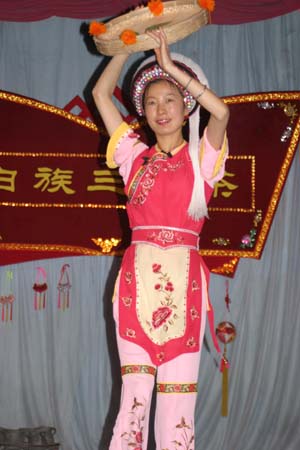 |
| The last number represented a Bai wedding tradition that involves giving the bride dozens of hard pinches on the face and elsewhere. The explanation, given in Chinese, didn’t provide a lot of clarity about this custom. | 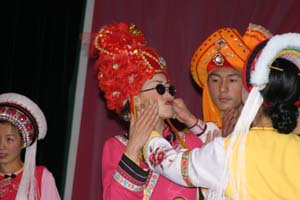 |
As a grand finale, the audience was invited on stage to do what looked like a Bai version of the hokey-pokey. Tom and the girls floored me by gamely taking part.
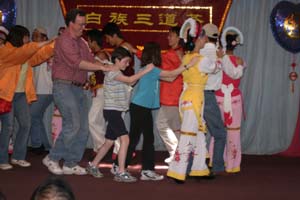 |
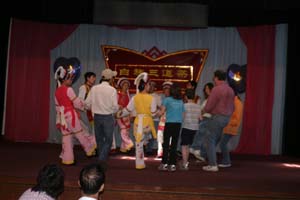 |
| At the very end, the two lead dancers even mustered up smiles for a pose with the girls. | 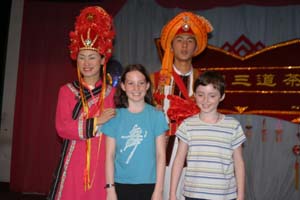 |
In the end, Huang was right to advise us to give the three courses of tea a miss. But in a way, it helped us appreciate all the more the truly authentic experiences we would have later in our trip. The next day we would meet and have dinner with a Bai family in another traditional house that showed us that Bai culture is very much alive and integrated into modern life in a way that this tacky tea ceremony was not.
Next: Bai Dinner